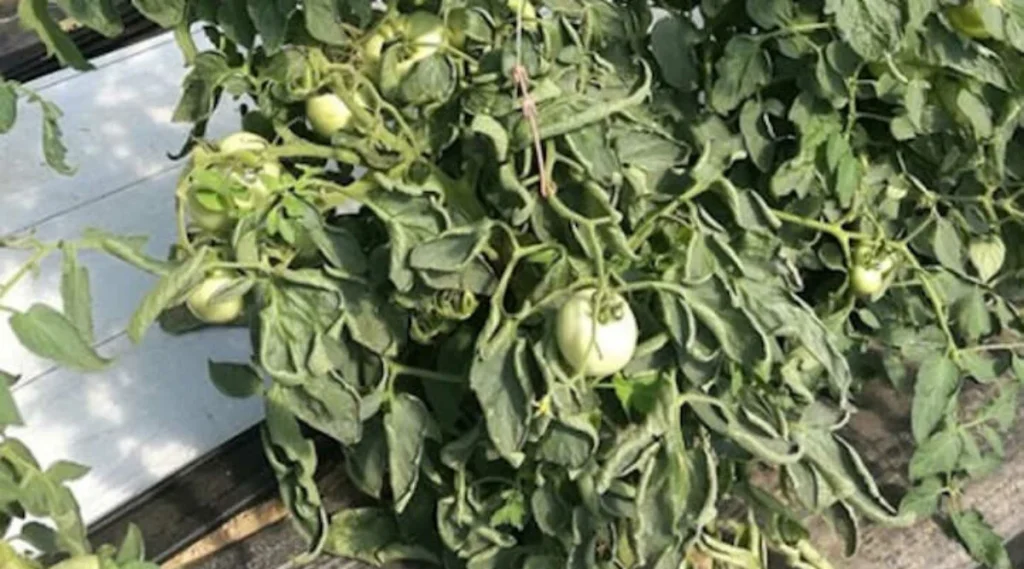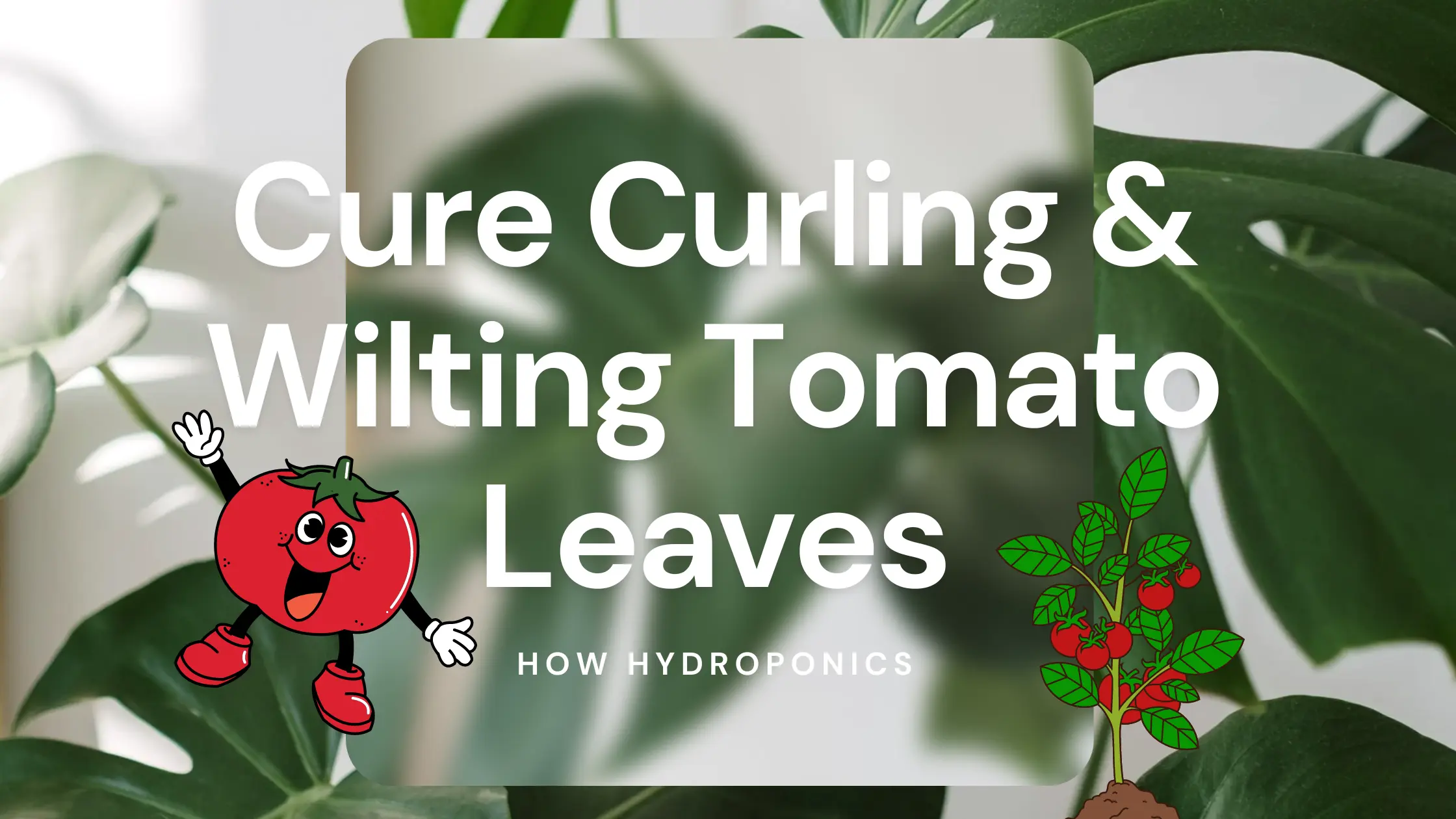Tomatoes are one of the most popular plants grown in home gardens and are prized for their delicious fruits. However, even the healthiest-looking tomato plants can experience issues such as leaf curl and wilt, which can be concerning for gardeners.
In this blog post, I will tell you the common causes of leaf curl and wilt in tomato plants and provide solutions to help you address these issues. This would allow you to get maximum yield from your hydroponic tomato plants.
So, without any delay, let’s start.
Environmental Stress
Environmental factors such as extreme heat, drought, or fluctuations in temperature can cause the top leaves of tomato plants to curl and wilt.

When exposed to high temperatures, tomato plants may experience heat stress, leading to leaf curling as a protective mechanism to conserve water. Similarly, drought conditions can cause leaves to wilt as the plant conserves moisture by reducing transpiration.
Also Read – pH Down guide for Hydroponics
Solution: Ensure that your tomato plants are adequately watered, especially during periods of hot and dry weather. Consider providing shade or using mulch to help regulate soil moisture and temperature.
Pests and Diseases
Pests such as aphids, whiteflies, and spider mites can infest tomato plants, causing damage to the leaves and leading to curling and wilting. Diseases such as tomato yellow leaf curl virus (TYLCV) and bacterial wilt can affect tomato plants, causing symptoms such as leaf curling and wilting.
Solution: Regularly inspect your tomato plants for signs of pest infestation or disease. If pests are detected, use organic or chemical controls to manage the infestation. Practice good sanitation measures to prevent the spread of diseases, such as removing and disposing of affected plant material.
Nutrient Deficiencies or Imbalances
Nutrient deficiencies or imbalances can also contribute to leaf curling and wilting in tomato plants. Common deficiencies that can cause these symptoms include potassium, magnesium, and calcium deficiencies.
Additionally, excessive fertilization or nutrient ratio imbalances can disrupt essential nutrient uptake, leading to physiological disorders in plants.

Solution: Test your soil to determine nutrient levels and pH, and adjust fertilization accordingly. Consider using a balanced fertilizer formulated specifically for tomatoes to ensure that your plants receive the necessary nutrients in the right proportions.
Also Read – Best EC & pH Meter for Hydroponics
Herbicide Damage
Exposure to herbicides, either through drift from nearby applications or residues in contaminated soil or water, can cause damage to tomato plants, including leaf curling and wilting.
Herbicide damage typically affects new growth first and may manifest as distorted or cupped leaves.
Solution: Take precautions to prevent herbicide drift from neighboring properties by communicating with neighbors and following label instructions when using herbicides.
If herbicide damage is suspected, discontinue the use of contaminated water or soil and monitor affected plants closely for recovery.
Conclusion
Leaf curling and wilting in tomato plants can be caused by a variety of factors, including environmental stress, pests and diseases, nutrient deficiencies or imbalances, and herbicide damage. Regular monitoring, proper watering and fertilization, pest and disease management, and careful herbicide use are essential for maintaining healthy tomato plants.

